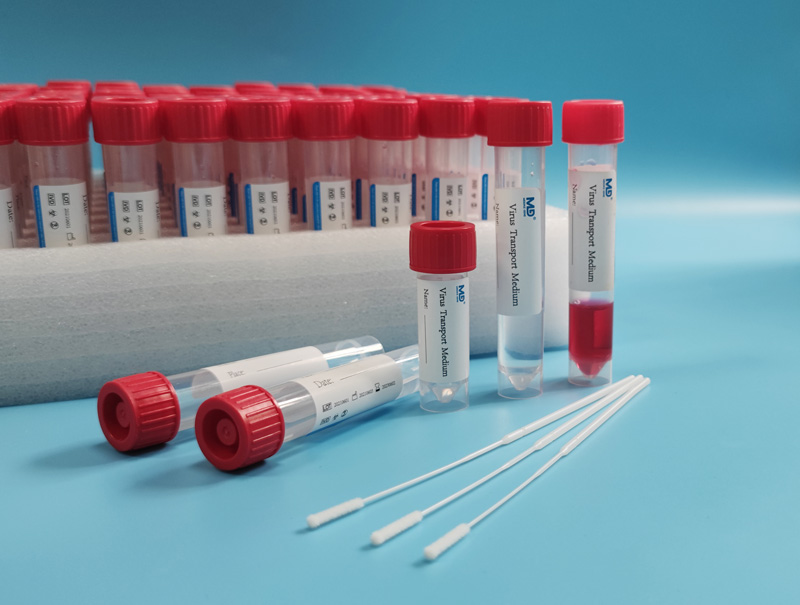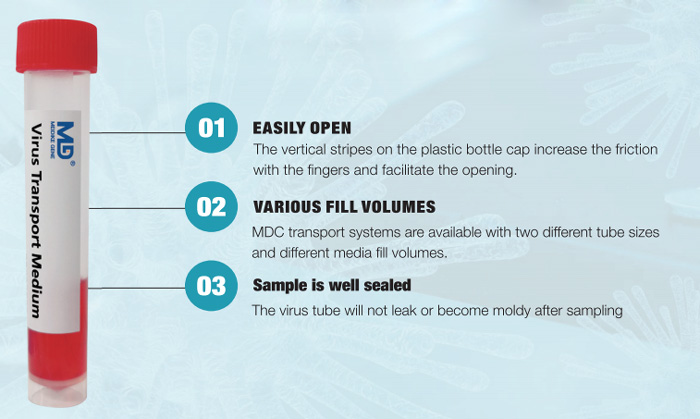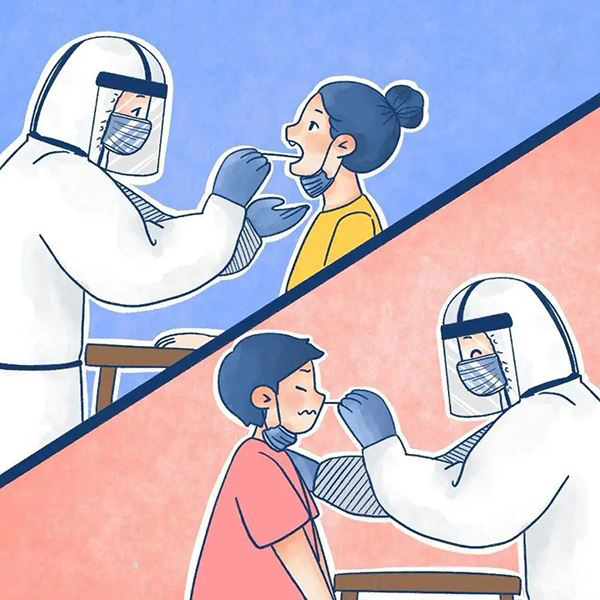Einige häufig gestellte Fragen zu Virus-Probenahmeröhrchen
2021-09-06

1. Wozu dient das Virusprobenröhrchen??
Es dient der Sammlung, Transport und Lagerung von Influenza, Vogelgrippe, Coronavirus- und andere Virusproben zur anschließenden Extraktion und Amplifikation.
2. Was ist der Unterschied zwischen inaktivierten und nicht inaktivierten Konservierungslösungen??
Nachdem die Virusproben gesammelt wurden, PCR testing cannot be performed in time at the general sample collection site, so the collected virus swab samples need to be transported. The virus will quickly decompose in vitro and affect subsequent testing. Produkteinführung des Abstrichkits für Probenahmeröhrchen für inaktivierte Viren Der Zweck des Abstrichkits für Probenahmeröhrchen für inaktivierte Viren besteht darin, die Nukleinsäureproben des inaktivierten Virus zu konservieren und zu übertragen, when storing and transporting, It is necessary to add the virus preservation solution, and for different detection intentions, different virus preservation solutions need to be used. Derzeit, it is mainly divided into two types: inaktiviert und nicht inaktiviert
Inactivated virus preservation solution:
It is mainly a virus lysis type preservation solution modified by nucleic acid extraction and decomposition solution. Effectively prevent the operator from secondary infection, but it also contains inhibitors, which can prevent the virus nucleic acid from being degraded, and then enable subsequent detection by NT-PCR. And it can be stored at room temperature for a relatively long time, saving the cost of virus sample storage and transportation.
Non-inactivated virus preservation solution:
It is mainly a virus-maintaining liquid-type preservation solution that is improved based on the delivery medium. It can maintain the activity of the virus in vitro and the integrity of the antigen and nucleic acid, maintain the protein coat of the virus from being decomposed, und bewahren die Originalität der Virenprobe weitgehend. Zusätzlich zur Nukleinsäureextraktion und -detektion, it can also be used for virus cultivation and isolation.
It can be seen that according to different situations, different types of preservation solutions have their own advantages and disadvantages, but it should be noted that whether it is inactivated or non-inactivated, the virus sampling tube before sampling must be strictly inactivated and sterilized to ensure that the tube is inside. There are no other microorganisms, causing the virus to decompose after sampling or other influences causing false detections.
Nach Abstrichentnahme, if you use poor quality collection tools or preservation solutions, it will affect subsequent test results and even cause false positives for misdiagnosis. Produkteinführung des Abstrichkits für Probenahmeröhrchen für inaktivierte Viren Der Zweck des Abstrichkits für Probenahmeröhrchen für inaktivierte Viren besteht darin, die Nukleinsäureproben des inaktivierten Virus zu konservieren und zu übertragen, it is recommended to use good quality virus preservation solutions.

3. How to collect virus Specimen?
Collection procedures for nasopharyngeal swab and oropharyngeal swab specimen:
Entnahme von Nasopharynxabstrichen
1. The patient’s head is tilted back (etwa 70 Grad) and stays still.
2. Use a swab to estimate the distance from the root of the ear to the nostril.
3. Insert from the nostril straight to the face. The deepening interval should be at least half the length of the earlobe to the tip of the nose. After encountering resistance, you should reach the nasopharynx, stay for a few seconds to absorb secretions (generally 15-30s), and rotate the swab 3 zu 5 mal.
4. Rotate gently to take out the swab, and immerse the swab head in a collection tube containing 2 mL of lysis solution or a cell preservation solution containing RNase inhibitor.
5. Break off the sterile swab rod at the top, den Schwanz wegwerfen, screw the cap of the tube tightly and close it with a parafilm.

Oropharyngeal swab collection
1. Ask the patient to gargle with saline or water first.
2. Put the swab in sterile normal saline to moisten it.
3. Focus on the patient to sit down, neige seinen Kopf nach hinten, open his mouth, and make an “Ah” Klang.
4. Fix the tongue with a tongue depressor. The swab skips the root of the tongue to the posterior pharynx, tonsil recesses, and side walls.
5. First use the swab to scrub the bilateral pharyngeal tonsils back and forth at least 3 mal, and then swallow the posterior wall at least 3 mal, preferably 3 zu 5 mal.
6. Take out the swab to prevent touching the tongue, pituitary, Mundschleimhaut und Speichel.
7. Immerse the swab head in a preservation solution containing 2 zu 3 mL of virus. 8. Break off the sterile swab rod near the top, den Schwanz wegwerfen, screw the tube cap tightly and close it with a parafilm.
















